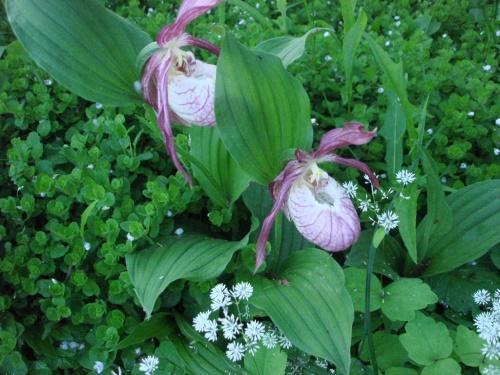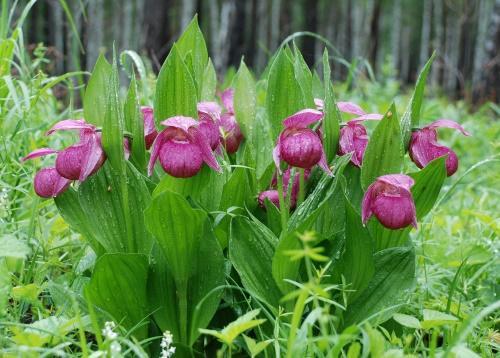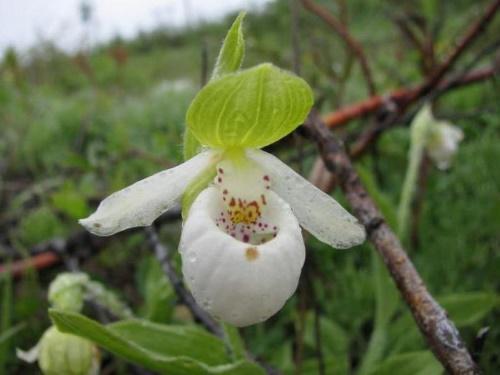Forest orchid or lady's slipper large-flowered
 A flower of stunning beauty grows in shady and humid taiga forests. Seeing him, many immediately remember the queens of indoor plants - proud orchids, and for good reason, because these two cultures bloom almost the same. That is why they call the forest orchid "flower lady's slipper." Herbaceous perennial from the family orchids (orchid) grows freely in natural conditions among taiga forests, where there is always water, and the bright sun will not be able to disturb it.
A flower of stunning beauty grows in shady and humid taiga forests. Seeing him, many immediately remember the queens of indoor plants - proud orchids, and for good reason, because these two cultures bloom almost the same. That is why they call the forest orchid "flower lady's slipper." Herbaceous perennial from the family orchids (orchid) grows freely in natural conditions among taiga forests, where there is always water, and the bright sun will not be able to disturb it.
The flower in different countries has its own names: in England it is "ladies 'shoes", for Americans - "moccasins", and in our area it is better known as "Theotokos' boots".
Description of the species
Lady's slipper has a superficial but thick rhizome. It grows oval green leaves with pointed tips and longitudinal veins. The surface of the leaf is covered with the smallest light fluff, and there are basically four of them on each bush.
The plant is characterized by slow growth: the annual growth of the root system is only 4 mm, and the flower bud is laid at least three years before flowering.
In the middle of summer, the bush produces a rather high peduncle, up to 45 cm in height, with a large flower like an orchid, while the upper petals are elongated, and the lower one resembles a thick and puffed lip (shoe). The color of the inflorescences can be very diverse, but most often there are varieties with different shades of pink and red (there are also white "shoes").
The largest species is the large-flowered lady's slipper - the diameter of its flowers reaches 10 cm.
On the basis of the large-flowered shoe, breeders have bred many hybrid varieties that growers are happy to grow as garden plants.
What does a forest orchid like?
The lady's slipper is not very capricious and feels quite comfortable in the garden if you create conditions for it that are as close as possible to the natural habitat of the flower. These include:
- breathable alkaline soil;
- a place with diffused lighting;
- abundant watering, but on condition that the earth should dry out a little;
- periodic spraying of bushes in hot dry summer;
- organic fertilizing during the flowering period.
It is better to propagate the forest beauty by dividing the rhizome at the end of summer, since the seeds germinate poorly, and the plants obtained by seedlings bloom 8 years after sowing.